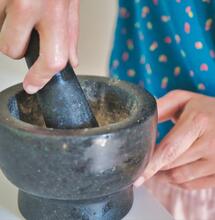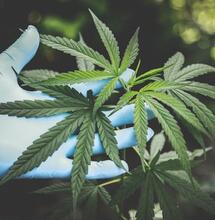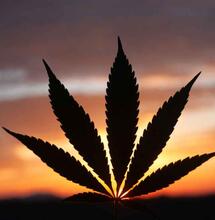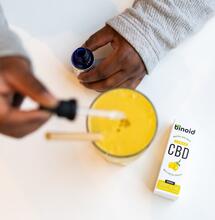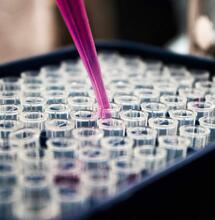The Stages of Cannabis Growth
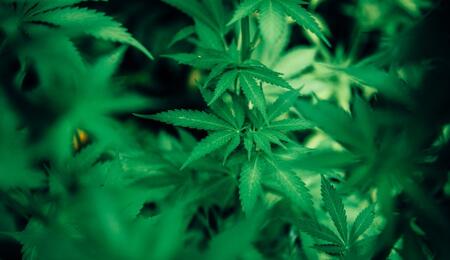
To Germinate, your seeds must be mature to grow. Mature seeds will be shiny, brown in colour, and dry and hard to the touch. To germinate your seeds, keep them in a wet, dark place. Once they crack and you see the start of a new root, plant the seed. Germination usually takes 7-14 days.
Seedling: 2-3 Weeks
A single root will shoot downwards as the new stem grows upwards, pushing the seed out of the soil. Two rounded leaves will sprout from the stem as the plant breaks away from the seed's protective casing. The seedling growth stage is fragile; plants must receive 18-24 hours of sunlight, moist soil, and mild humidity.
The seedling has a small root system, so it's crucial not to overwater. Once a seedling, the plant will develop traditional-looking cannabis leaves. Healthy seedlings should be short with thick healthy leaves that appear vibrant green in colour. Keep growing environments clean and free of excess moisture to ensure the plant does not become diseased or mouldy.
Vegetative Growth: 2-8 Weeks
After locating to a larger pot, the growth rate soars. Stems become thicker and more leaves, nodes, and branches are produced. The root system becomes more ready for flowering.
This is the stage where growers will begin topping and training plants. Sativa plants are lanky and don't have as many leaves, while Indica plants are shorter and denser. In Veg, your plants need more water, a flow of moist air, nitrogen and potassium-rich nutrients, and a lot of space to grow 2-3 feet tall.
During vegetative growth, cannabis plants should be in well-drained soil. Plants should be kept on an 18-hour daylight cycle for indoor grow rooms with a 6-hour night period. Light cycles control when a plant goes from the vegetative stage to flowering.
Pre-Flowering: 1-2 weeks
It can take 7 to 14 days for a plant to enter the pre-flowering stage. Once it does, you can determine the sex.
Female Plant: Two pistils containing the flower's reproductive parts will grow on the bud.
Male Plant: Small green sacs full of pollen will be seen on the node areas.
Once the sacs on a male plant burst, the pollen can fertilize the nearby females ruining the THC potential of the plant. This is why it's critical for male plants to be removed before flowering.
Non-pollinated female plants produce more cannabinoids. They have an exceptionally high concentration of psychoactive agents producing large volumes of resin containing high levels of THC. Once the plant receives less light daily (from 18 to 12 hours), its growth will halt and enter the flowering phase.
Flowering: 6-8 Weeks
To enter the flowering stage, cannabis requires 10 to 12 hours of complete darkness daily. You will know your plant is ready for harvest when the pistils turn from white to reddish-orange and the trichome heads turn transparent to cloudy.
Trichomes produce THC, terpenes, flavonoids, and other cannabinoids. As flower clusters develop, more cannabinoid compounds develop, and the groups become sticky from resin.
In the flowering stage, cannabis plants enjoy warm weather and medium humidity and benefit from intermittently receiving blooming nutrients.Trichomes turn from cloudy white to brown once THC begins to weaken. Harvest once half the trichomes are opaque if you want the highest amount of THC.
Harvesting and Curing: 2-4 Weeks
Once ready, the plant should be cut down into smaller branches to dry. The pieces should be hung upside down in a cool, dark room. Apply a humidity level of between 40 and 50% and allow it to hang for 7 to 14 days. Drying weed too quickly will result in a harsh-tasting end product. Drying prevents fungus and bacteria from growing, effectively preserving the life of your cannabis.
Curing is optional and involves ageing cannabis in sealed, airtight containers between 50 and 60 °F. Jars should not be packed tightly and remain stored for 1 to 3 weeks. Open briefly once a day to release any buildup of gases. Curing improves flavour and burn quality, and taste
Cannabis plants grown indoors can be easily affected by fluctuations in environments. To succeed, indoor grow rooms need adequate air circulation, humidity, CO2 and temperature controls. Grow spaces with an uncontrolled climate are at a higher risk of mould, mildew, deficiencies, growth problems and pest infestation.
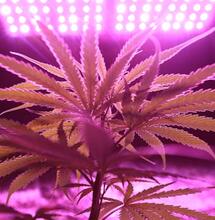

_0.jpg)


